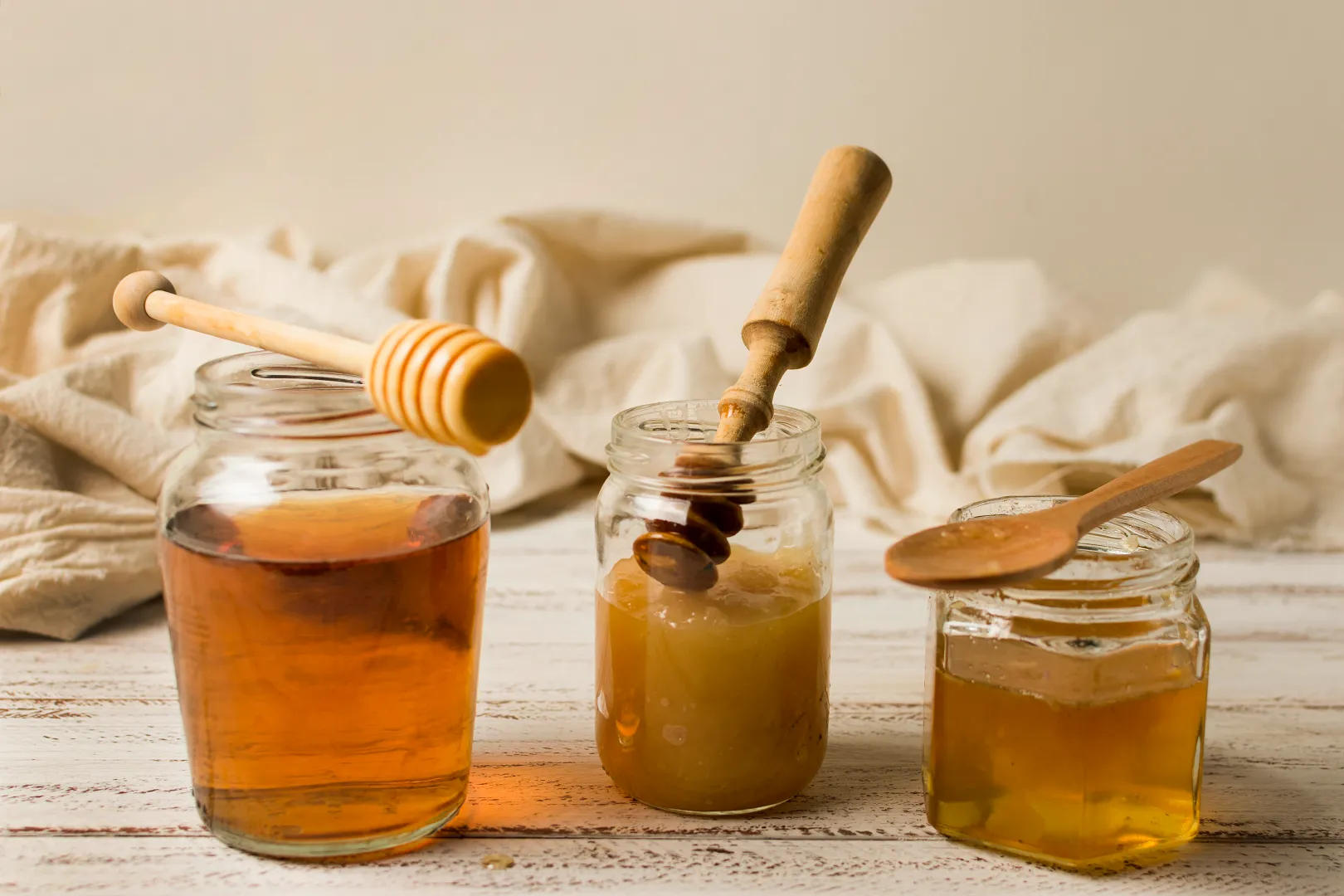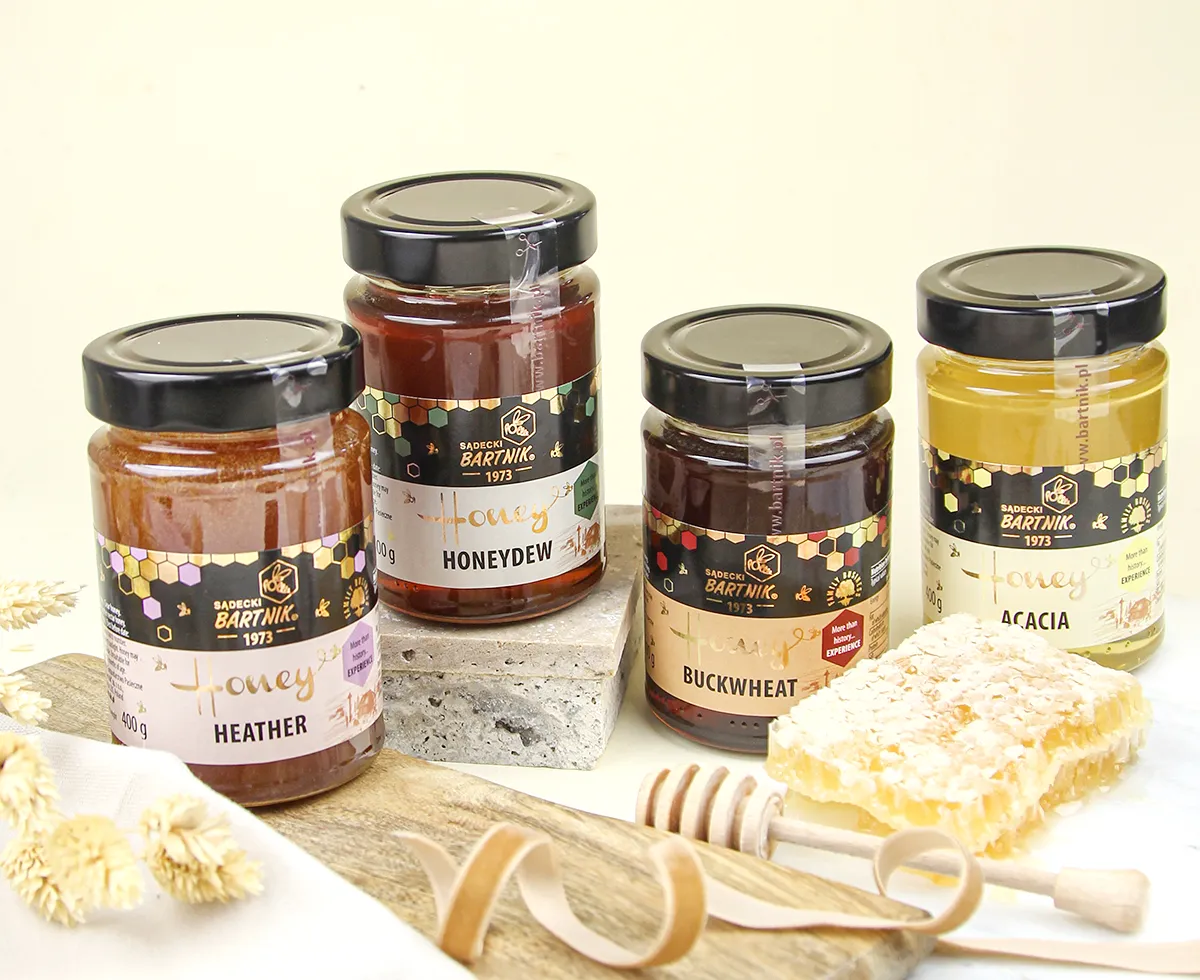
The World in a Spoon:
The Differences of Honey Across Origins
Have you ever wondered why honey around the world comes in so many types, boasting a vibrant array of colors, flavors, and aromas? Do they all provide the same benefits? Let’s dive into the fascinating world of honey to uncover why it can vary so widely.

Here’s a more detailed explanation:
Floral Source:
The type of flower from which bees collect nectar is the most significant factor determining a honey’s properties. Different flowers produce nectar with unique chemical compositions, including varying sugar profiles, pollen, vitamins, minerals and an array of other compounds. These constituents collectively influence the final honey’s characteristics, such as its distinct flavors, aromas, colors, and its purported health benefits.
Geography and Climate:
Geography and climate play a crucial role in shaping a honey’s unique profile. Regional variations in soil conditions, air quality, sunlight, and rainfall dictate the types of plants that flourish, directly influencing the available nectar sources. Consequently, honey from the Malaysian Rainforest will likely different from honey produced in the Carpathian Mountains in flavors, aromas, colors, and purported health benefits.
Seasonal Variations
Seasonal variations significantly impact honey’s color, flavor, and nutritional composition, all of which are influenced by the types of flowers blooming during a specific season. These variations are driven by the availability of nectar-producing flowers, weather patterns, and even the health of the bee colonies themselves.
Bee species:
The specific bee species significantly influences honey production and composition, primarily through their distinct foraging behaviors and preferences for certain floral sources. While Apis mellifera (the Western honey bee) is the most commonly managed species for large-scale honey production, other bee species, such as Tropical stingless bees, also contribute to honey, often yielding unique varieties. These different species possess varying tongue lengths, foraging ranges, and even the enzymes they introduce into the nectar during honey ripening. Such factors directly impact the honey’s final flavor, color, aroma, and even its unique chemical profile.
Comparing Honeys Across Origins:
New Zealand: Manuka Honey
Flavor: Earthy, medicinal, caramel-like.
Secret: Bees forage on manuka shrubs (Leptospermum scoparium) rich in dihydroxyacetone (DHA), which converts to methylglyoxal (MGO) in the honey.
Well known for: Medicinal and therapeutic properties.
Australia: Leatherwood Honey
Flavor: Perfumed, herbal, with a spicy kick.
Secret: Sourced from ancient Tasmanian rainforests, primarily from the Leatherwood tree (Eucryphia lucida).
Well known for: Culinary versatility and gourmet culinary ingredient.
Canada: Clover Honey
Flavor: Mild, buttery, universally sweet.
Secret: Bees forage extensively on vast clover fields (Trifolium spp.) thriving under cool skies.
Well known for: Everyday all-purpose honey.
Poland: Diverse European Honeys
Secret (General for Poland’s diversity): Diverse native flora thriving across temperate climates with distinct seasons; varied landscapes including extensive forests, meadows, and agricultural fields provide a rich array of nectar and honeydew sources.
White Acacia Honey
Flavor: Delicately floral and midly sweet. With the aroma of the white acacia flowers.
Well known for: Natural alternative sweetener with lower GI (Glycemic Index); beneficial for digestive well-being, respiratory infections; insomnia kidney and urinary tract disease and more*.
Buckwheat Honey
Flavor: Intense, slightly spicy flavor. Molasses-depth, malty, robust.
Well known for: Strengthen heart and circulatory system; Often recommended for strengthening body or addressing anemia, Anti-cancer diet; provides quickly digestible energy and more*.
Honeydew Honey
Flavor: Resinous, noble, slightly resinous or nutty, less sweet taste. Has a weak, slightly spicy, subtle and pleasant smell.
Well known for: Boost immunity; Prevent infections; Regulate blood sugar levels; Ally of our brain; High mineral content; Often used for Respiratory issues and more*.
Heather Honey
Flavor: Light sweetness with delicate bitterness. Rich aroma is reminiscent of the scent of blooming heather, with persistent woody, warm floral notes. Has amber color with a tea tint and jelly-like texture.
Well known for: Rich in vitamins, possesses antiseptic properties and serves as an excellent remedy for eye, heart, and gastrointestinal diseases; Brain nutrition; Natural alternative sweetener with lower GI (Glycemic Index); Rich antioxidant content help boost immune system; has diuretic and bactericidal effects which good for the health of prostate gland and more*.
Besides, Poland’s honey also stands apart in:
✅ Purity Guaranteed: Strict EU standards.
✅ Bee Welfare: Traditional, hive-centered beekeeping, emphasizing natural practices and the health of the bee colonies.
✅ Flavor Intensity: Diverse native flora, thriving in a temperate climate with distinct seasons, yields exceptionally rich and distinct flavors.
That’s why we chose Poland honey. Because we tasted this integrity firsthand – and knew Malaysians deserved it. 😊
Ready to explore?
╰┈➤ Shop Polish Honey now!
